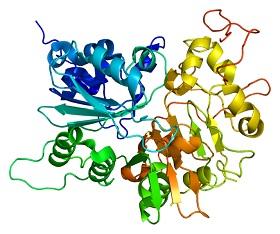The Missing Kingdom: Why Fungi Must Be Central to Conservation Strategy
28 December 2025
Published online 27 March 2012

Spinocerebellar ataxia with axonal neuropathy is a rare neurodegenerative disease that afflicts children. As the condition advances, the child's coordination walking progressively worsens and eventually the child must depend on a wheelchair. A mutation to a gene encoding the DNA repair enzyme tyrosyl DNA photophodiesterase 1 (TDP1) has been linked to the disease, a mutation first identified in a Saudi Arabian family.
Non-functional TDP1 in neurons causes accumulation of damaged DNA and consequently death of the neuron. Despite this important role, the molecular mechanism behind TDP1 repair of single-strand DNA breaks is unknown. Now, a team of researchers led by Sherif El-Khamisy from the University of Sussex and Ain Shams University in Cairo has found that the addition of a small ubiquitin-like modifier (SUMO) group to helps repair DNA damage, which might prevent cell death.
TDP1 is SUMOylated at a specific amino acid called Lysine 111. In mammalian cells, TDP1 without Lysine 111 has a lower rate of DNA repair. The expression of the normal version of the protein rapidly repaired the damage.
The addition of a SUMO group causes TDP1 to build up at sites of DNA damage, allowing it to repair nicks in DNA. This is the first time that SUMOylation has been linked to DNA repair, it had previously only been known to lead to protein degradation.
The transcription of DNA can lead to unwanted single-strand DNA breaks. To analyse if TDP1 helped repair these breaks, the researchers treated cells expressing SUMOylation-defective TDP1 or normal TDP with a substance that inhibits RNA polymerase, essential for DNA transcription. They found that DNA damage was comparably reduced in all cells. This shows that TDP1 repairs DNA damage that results from transcription.
These results will help piece together the puzzle of how mutations to TDP1 lead to spinocerebellar ataxia, leading to therapies that stop or slow neurodegeneration.
doi:10.1038/nmiddleeast.2012.40
Stay connected: